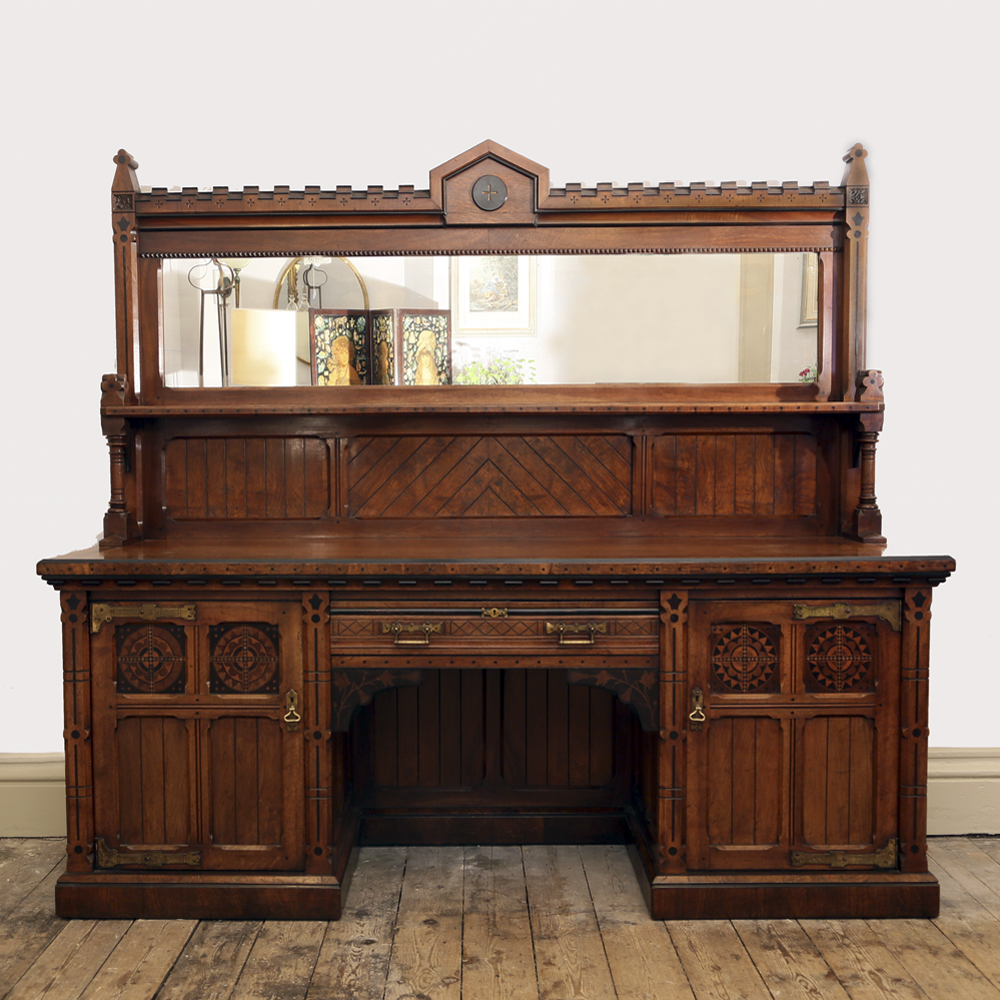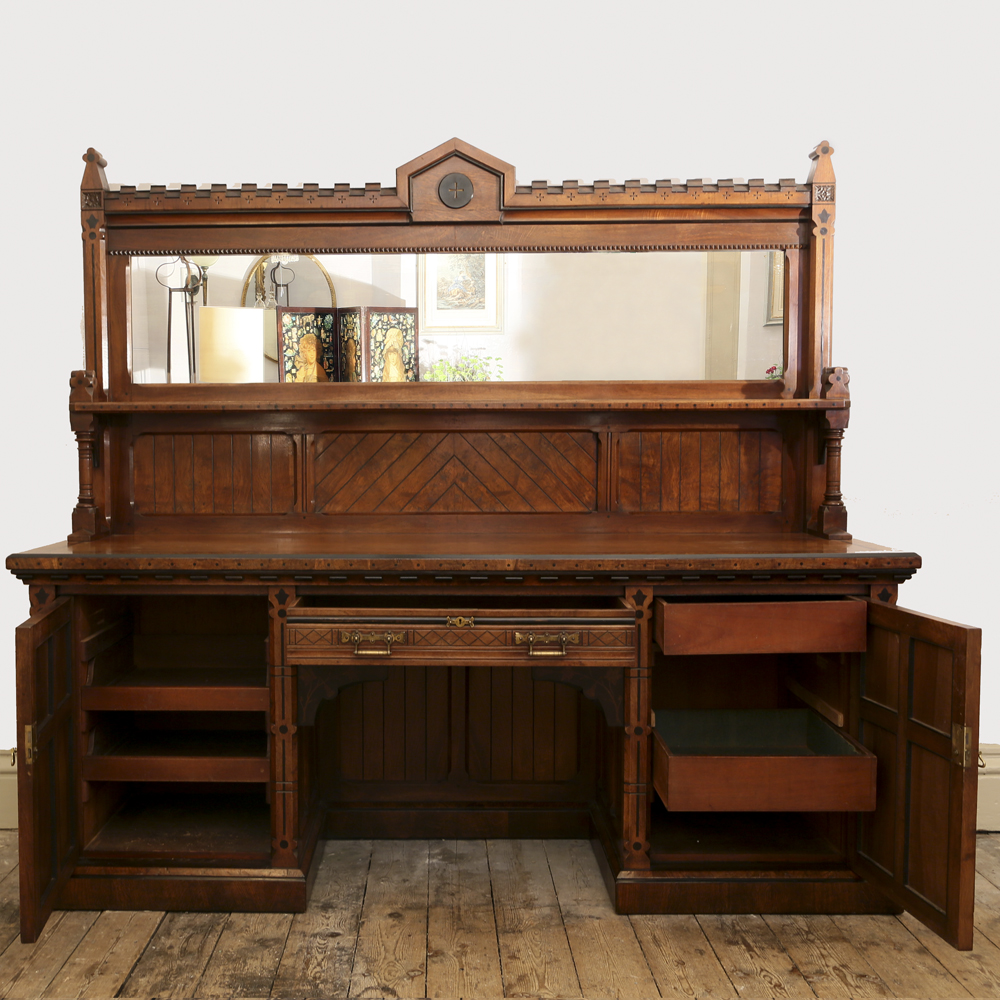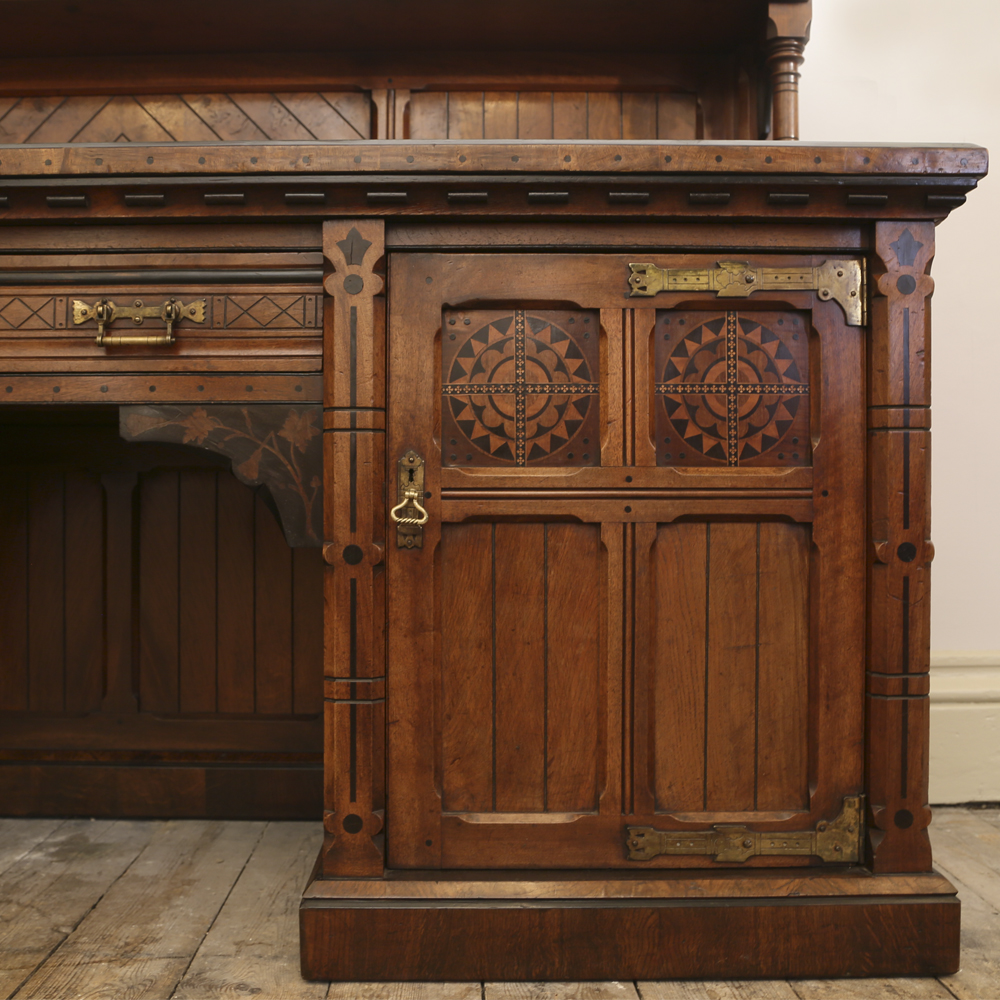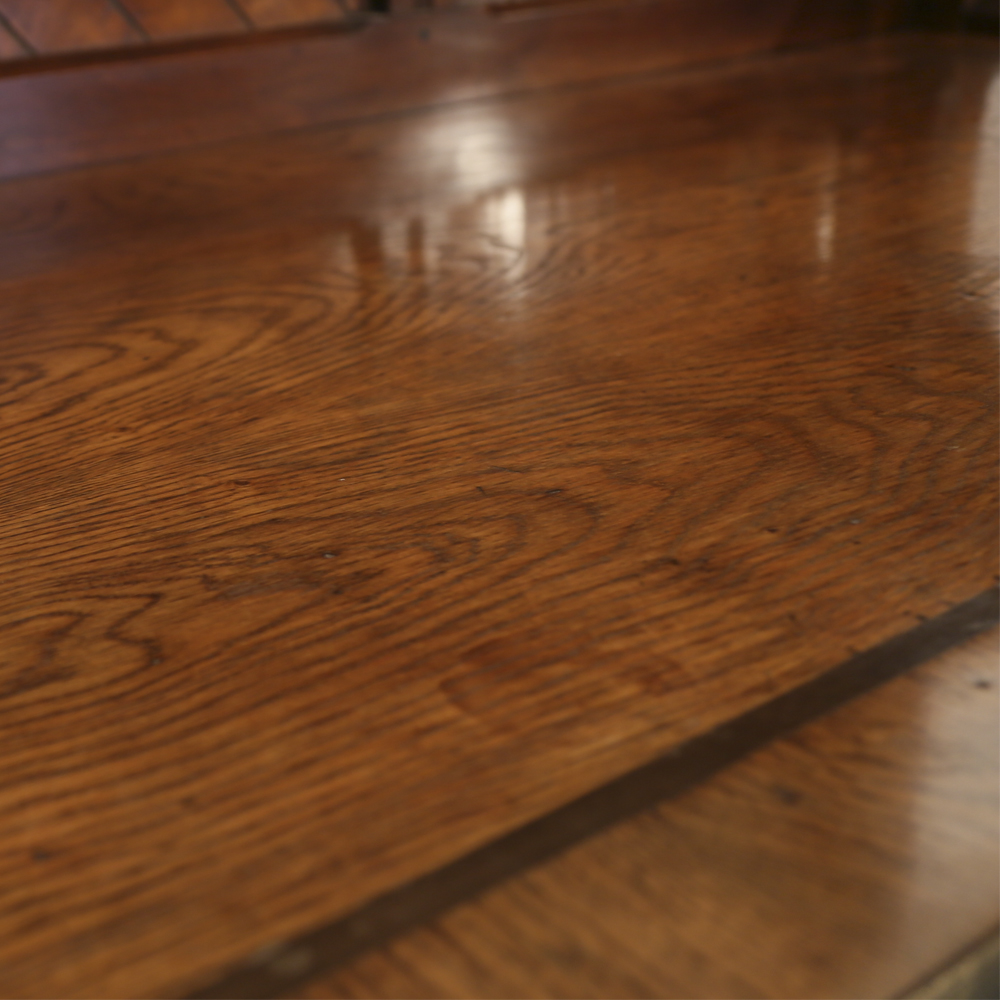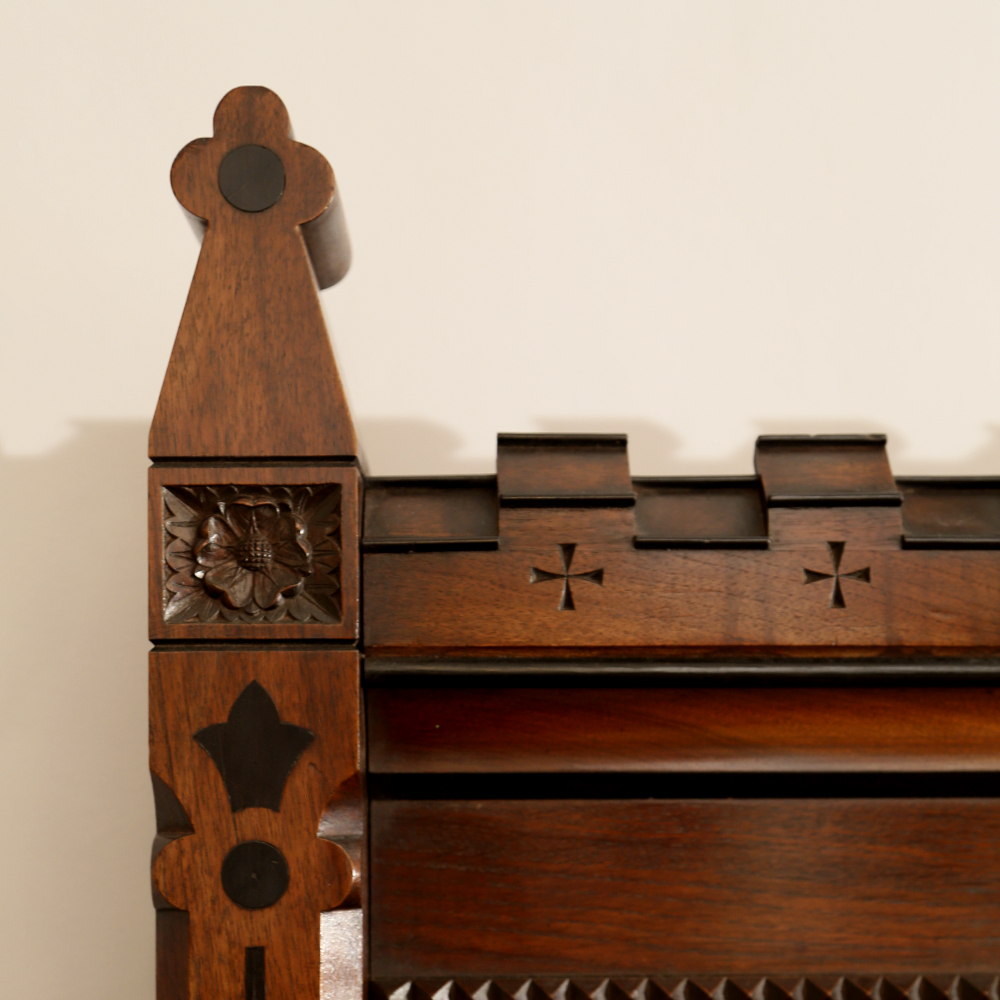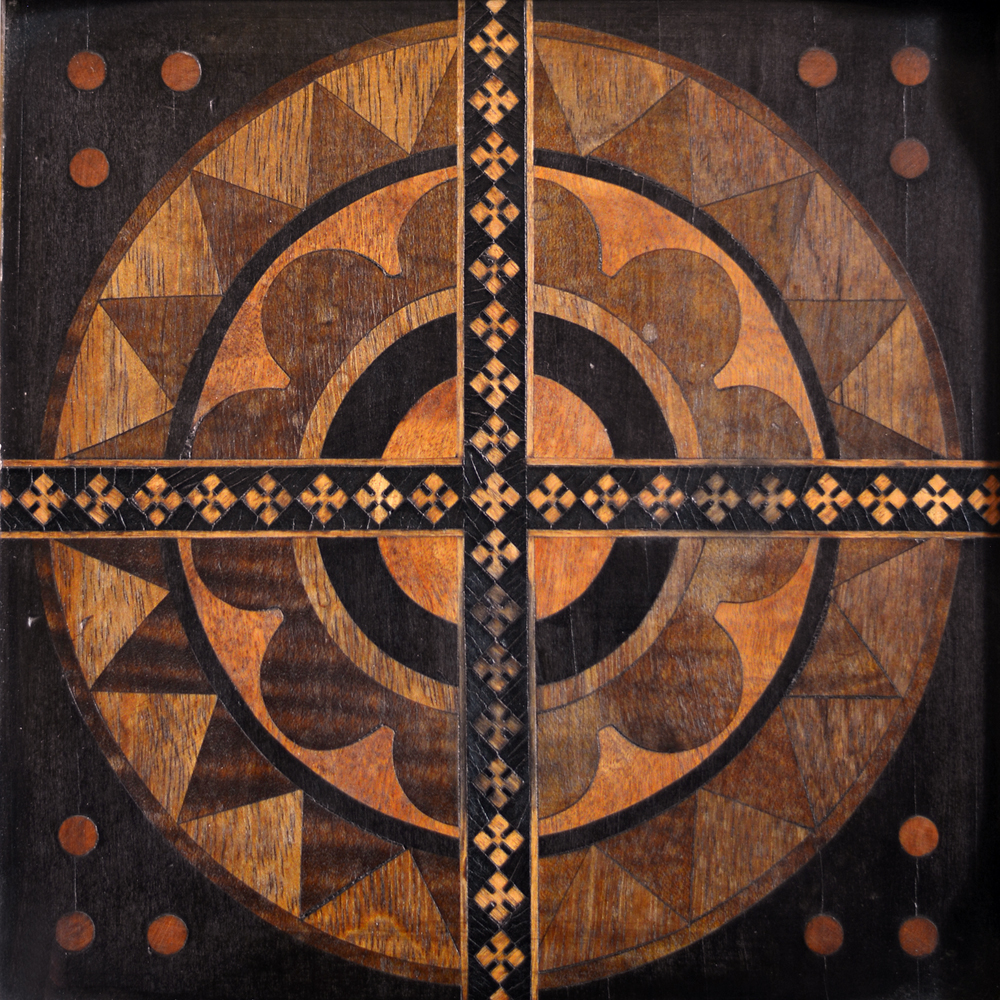No products in the basket.
Archived Stock - This item is no longer available
An imposing Reformed Gothic oak, walnut, ebonized and marquetry sideboard,
in the manner of Charles Bevan, circa 1870
The mirrored super-structure with castellated top and shelf supported by ring turned columns, the crossbanded top with ebonised dot inlay above pedestal base with fitted frieze drawer flanked by cupboards having marquetry panels and stylised brass strap hinges, each cupboard flanked by chamfered and inlaid pilasters on plinth base.
SOLD OUT
In stock
‘Sledge-hammer blows of self-assertion and solid geometry’ – Charles Handley-Read
Charles Bevan was an English ‘Reformed Gothic’ (otherwise known as Geometric Gothic or Muscular Gothic) architect designer who rose to prominence in 1864 with designs published in Building News for his inlaid oak davenport desk and his ‘New Registered Reclining Chair’ in 1865. Both were manufactured by the Leeds based firm of cabinet makers, Marsh & Jones (known as Marsh, Jones & Cribb from 1872) and the subsequent exposure lead to the company securing a prestigious commission from the Yorkshire philanthropist Sir Titus Salt.
There was great cross-pollination of ideas and designs during the period at which this cabinet was likely to be made (c.1870) which can make confident attribution of such a piece difficult (the lack of makers marks/stamps/labels further confounds this) - John Pollard Seddon, under who it is thought Bevan was tutored, wrote an scathing letter to The Building News (September 1865) accusing Bevan of plagiarism for his designs for the aforementioned Reclining Chair. The influences of Seddon’s designs on this piece are obvious (see GERE & WHITEWAY, 1993, Nineteenth Century Design, plates 82 and 84), but there are further distinct similarities to the marquetry panels in a writing cabinet designed by Richard Norman Shaw (ibid. plate 88). However when one consults the designs of Bevan for Sir Titus Salt, the similarity of the marquetry panels (specifically the motif of the triangles radiating from circles and contrasting use of dark and light timbers), the chamfered fielded panels, the theatrical used of floral marquetry and the presence of typically Bevan motifs such as the bold inlaid lines and dot-inlay would indicate him being the most likely source (further examples of these motifs can be seen in GERE & WHITEWAY, plate 126 and plate 129).
With regards to the cabinet makers responsible for the piece we again are presented with inconclusive evidence and suggestions are only speculative. Marsh & Jones were known to have ‘marketed a quantity of Bevan furniture almost identical to the Titus Salt commission’ (COOPER, J., 1987, Victorian and Edwardian Décor, page 268) and one only has to look at an old piece of LASSCO stock to see direct stylistic comparisons (click here) – this piece was stamped ‘R.GARNETT & SONS’ although it was though this was a retailers stamp as opposed to a makers mark. Bevan was also known to have designed piece for Gillows, Lamb of Manchester and Gregory & Co. Whilst we cannot be confident in the specific identification of a maker, we can be sure that it was made by one of the foremost mid-Victorian cabinet making firms, such is the quality carving and marquetry, and the overall execution of the piece.

